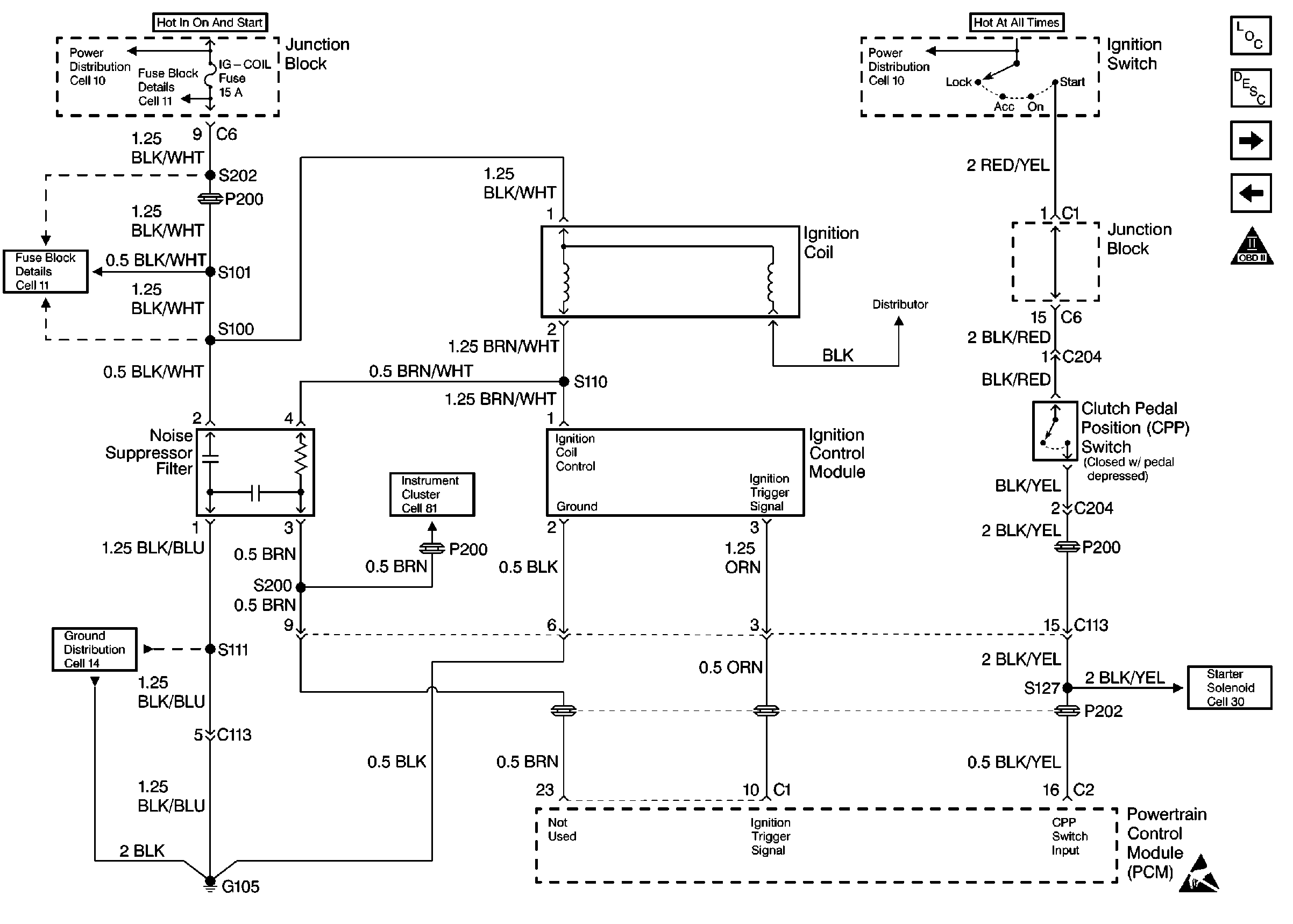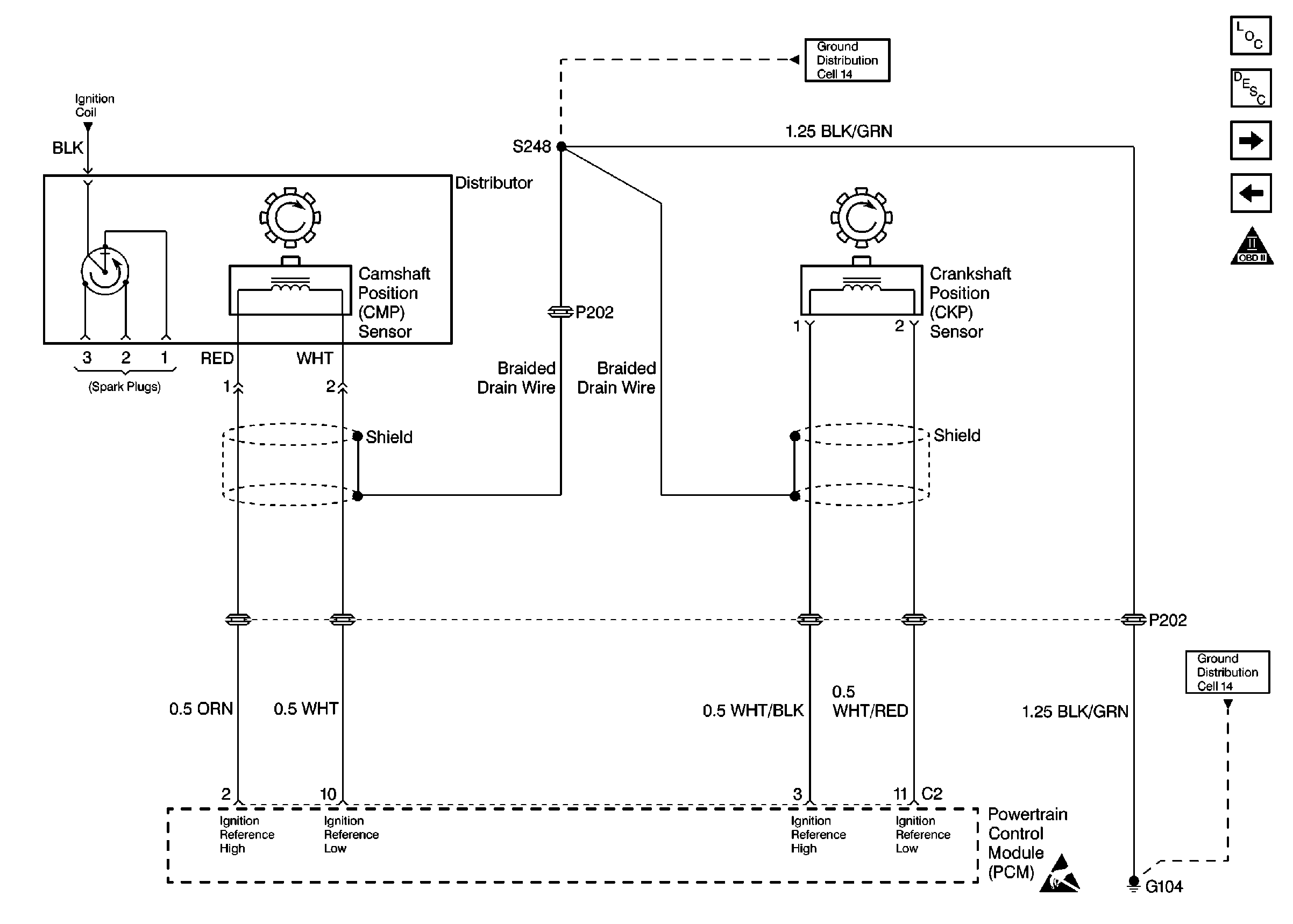The powertrain control module (PCM) uses information from the crankshaft position
(CKP) sensor and the camshaft position (CMP) sensor in order to determine when
an engine misfire is occurring. By monitoring changes in the crankshaft rotation
for each cylinder the PCM counts individual misfire events. The malfunction indicator
lamp (MIL) illuminates when the misfire rate equals or exceeds a pre-determined
count. A misfire rate that is high enough can cause the catalytic converter to
overheat under certain driving conditions. The MIL will flash On and Off when
the conditions for catalytic converter overheating are present.
If a DTC P0303 cannot be duplicated, the information included in the Freeze
Frame data can be useful in determining vehicle operating conditions when the
DTC was first set.
An intermittent fault may be duplicated by wetting the secondary ignition system
with water and operating the vehicle under the conditions that the DTC set.
The numbers below refer to the step numbers in the Diagnostic Table.
Step
| Action
| Value(s)
| Yes
| No
|
1
| Did you perform the Powertrain On-Board Diagnostic
System Check?
| --
|
Go to Step 2
| Go to
Powertrain On Board Diagnostic (OBD) System Check
|
2
| Start the engine.
Is a misfire present at idle?
| --
|
Go to Step
4
|
Go to Step 3
|
3
|
- Install a scan tool.
- Turn ON the ignition, leaving the engine OFF.
- Clear the scan tool information.
- Operate the vehicle within the Freeze Frame data as specified.
Is a DTC P0303 set?
| --
|
Go to Step
4
| Fault not Present-Go to Diagnostic Aids
|
4
|
- Disconnect the fuel injector electrical connector at the TBI unit.
- Install a
J 26792
spark tester or an equivalent at the end of the #3 cylinder ignition
wire.
- Crank the engine while observing the spark tester.
Is a crisp, blue spark present?
| --
|
Go to Step
9
|
Go to Step 5
|
5
|
- Remove the #3 ignition wire.
- Visually and physically inspect the #3 ignition wire for any of
the following concerns:
| • | Corrosion on the terminal ends |
- Repair as necessary.
Was a repair necessary?
| --
|
Go to Step
13
|
Go to Step 6
|
6
|
- Measure the resistance of the #3 ignition wire with a DMM.
- Replace the #3 ignition wire if it measures greater than the specified
value.
Did the #3 ignition wire need replacement?
| 3.0k to 6.7k ohms/ft
|
Go to Step 13
|
Go to Step 7
|
7
|
- Perform a physical inspection of the distributor cap and rotor.
Look for any of the following conditions:
| • | Faulty terminal connection |
- Repair as necessary.
Was a repair necessary?
| --
|
Go to Step
13
|
Go to Step 8
|
8
|
- Perform a physical inspection of the signal rotor in the distributor.
| • | Check that the signal rotor air gap is within the specified value. |
| • | Check for damage to the signal rotor. |
- Adjust or repair as necessary. Refer to
Ignition Timing Adjustment
Engine Electrical.
Was an adjustment or a repair necessary?
| 0.2-0.4 mm (0.008-0.016 in)
|
Go to Step 13
|
Go to Step 12
|
9
|
- Remove the #3 spark plug.
- Visually and physically inspect the spark plug for any of the
following conditions:
| • | Evidence of coolant in the cylinder |
- Replace as necessary.
Did the #3 spark plug need replacement?
| --
|
Go to Step 11
|
Go to Step
10
|
10
|
- Check the CKP sensor and the signal rotor for possible damage.
- Repair as necessary.
Was a repair necessary?
| --
|
Go to Step
13
| Go to Diagnostic Aids
|
11
| Was the spark plug replaced because of fuel, oil, or coolant
fouling?
| --
|
Go to Step 12
|
Go to Step 13
|
12
|
- Check for any of the following engine mechanical concerns that
could affect the #3 cylinder:
| • | Worn or faulty camshaft |
| • | Excessive valve deposits |
| • | Malfunctioning hydraulic valve lash adjusters |
| • | Broken or leaky piston rings |
| • | Loose or broken motor mount |
- Repair as necessary. Refer to Engine Compression Test Engine Mechanical Diagnosis.
Was a basic engine mechanical fault found and repaired?
| --
|
Go to Step 13
| Go to Diagnostic Aids
|
13
|
- Perform the scan tool Clear DTC Information function and road
test the vehicle within the Freeze Frame conditions that set the DTC.
- Review the scan tool data and check for DTCs. The repair is complete
if no DTCs are stored.
Are any DTCs displayed on scan tool?
| --
| Go to the Applicable DTC Table
| System OK
|


